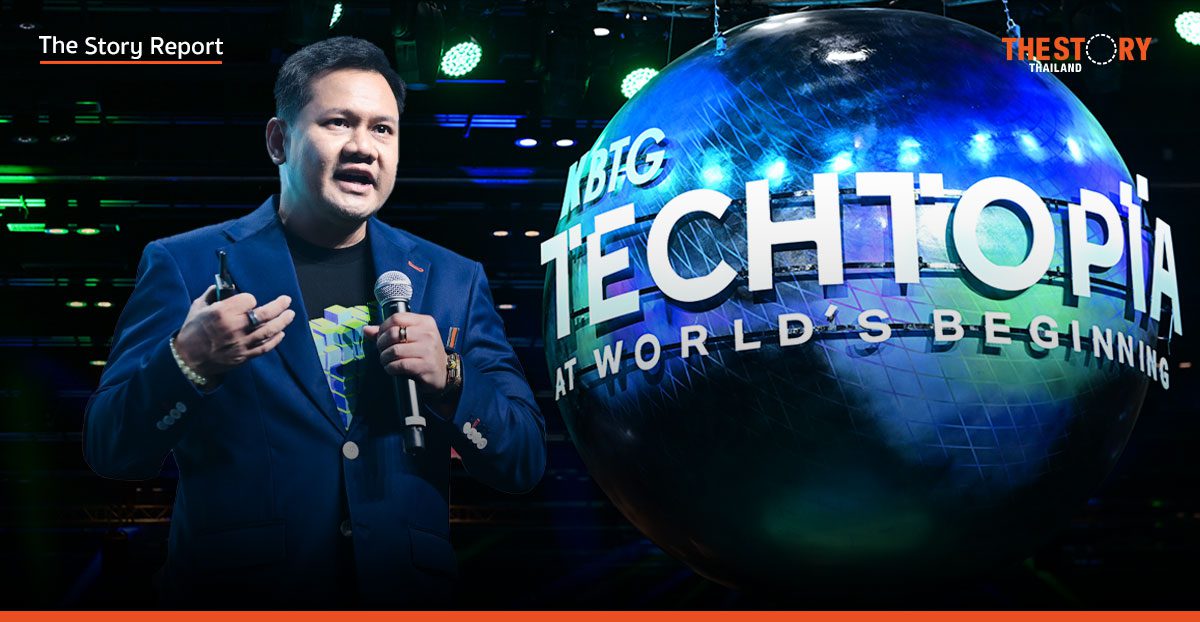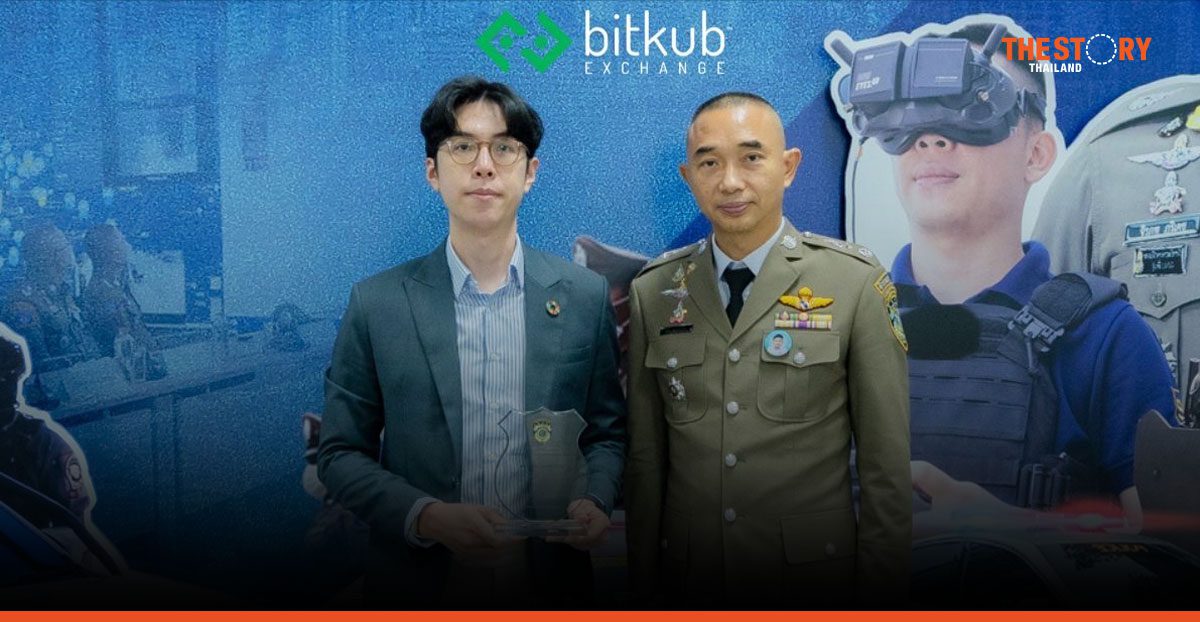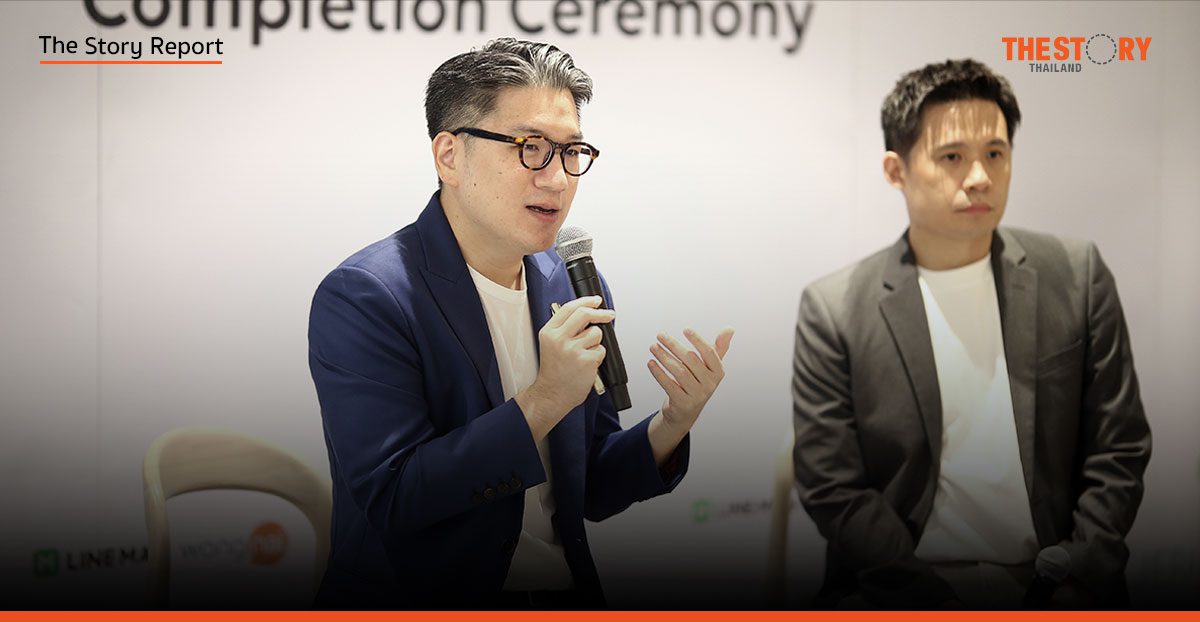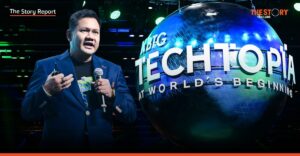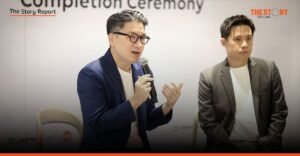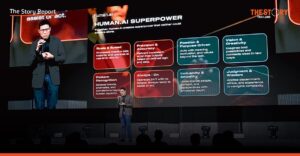Educators use Thai-language apps to save thousands of children from lives of semi-literacy
Learning Disabilities (LD), as the name suggests, are disorders that affect how a person is able to learn. There are many types of LD: disabilities in reading, writing and mathematics, to name a few common ones. Most cases of LD in Thailand are related to reading and writing. The Ministry of Education says it has recorded more than 300,000 children with LD at over 20,000 schools throughout the country, and in anticipation of that number growing, it is giving much more importance to the education of these children.
Meanwhile, the Assistive Technology and Medical Devices Research Center (A-MED), which works under the National Science and Technology Development Agency (NSTDA), is keen to offer innovations to support the development of children with LD. The center says many innovative solutions have already been designed to boost their reading and writing abilities.
Piyanat Noipong (Kru Nim), who previously held a K2 teacher position at Bangkok’s Central Special Education Center, recalls that, in the past, teaching children with LD relied mainly on nothing more than textbooks and notebooks. The children were required to repeatedly write down words that they found difficult, and without tech-enabled solutions to support their learning, the children were profoundly bored. At the same time, teachers who did not understand kids with LD had great difficulty teaching them.
- Local research develops ultimate surgical mask
- Praise for smartphone app that is changing community medical care
Teaching kids with LD requires a “customized” approach, because the severity of learning disability differs from case to case. Teachers must first analyze each child, to determine where his or her development should begin.
During her time with the Queen Sirikit National Institute of Child Health (Children’s Hospital), Piyanat witnessed the signing of a memorandum of understanding between the institute and the NSTDA, under which research related to children with LD would be applied to children seeking rehabilitation or training at the institute. Since the children must spend about eight hours at their school each day, the institute also provides training for their parents, so that they can learn how to use innovative solutions to support the children in performing homework outside school hours.
“The programs we have prepared for children with LD may, for example, give them a vocabulary set so that they can practice reading and writing words that are new to them. We may also give homework to parents, advising them about how long their children should perform home-based practice, how many words children should practice with, and how many times they should repeat each word. In all, our programs are designed to improve the ability of these children to learn,” Piyanat explains.
She says that programs developed by the NSTDA’s A-MED research center have given children with writing disability a lot of help. Normally, writing is more difficult than reading. Some children, even when they have the ability to read, are unable to write. Piyanat describes the programs as tools to assist children in their training. When they are equipped with these programs and they strike a problem, instead of seeking help from parents or people close by, they can just consult the programs.
“Children with LD have a good brain. If you tell them to memorize words, they can do that, although with some constraints. Writing and reading practice may help these children, but still, it may not be good enough,” Piyanat explains. “The innovative programs help in other ways. They let children explore vocabulary, and introduce them to increasingly difficult or new words in accordance with their needs”.
A-MED, NSTDA empowering the LD children with the assistive technology innovation
As a senior researcher at the NSTDA’s A-MED research center who has developed innovative platforms for children with LD, Dr. Onintra Poobrasert, reveals that efforts to create a platform for these children began in 2010. Before that, A-MED researchers had no knowledge of children with LD. While she now considers the project to be an opportunity, she admits that she felt uncomfortable with it at first, and it took her a while to develop a passion for the work. She recalls that she started liking the mission when she learnt that the work had improved children’s reading and writing abilities.
According to the studies, diagnoses of learning disabilities are generally made after children are at least nine years old, or in Primary 3 at school. The intelligence quotient (IQ) of children with LD is no different from that of other children. Where reading and writing are not involved, they can react and reply really well, she said.
In the beginning, an A-MED research team developed the “LD Writing Application Suite” for the Windows operating system. This application suite consists of four sub-applications: Thai Word Search, Thai Word Prediction, Thai Spell Checker, and Thai Word Processor.
“This application enabled children with LD to write better by autocorrecting words that they commonly misspelled. Moreover, the Thai Word Prediction feature displayed a predictive list of word choices for children to consider. By using such a tool, children can make more appropriate word choices,” Onintra says.
The LD Writing Application Suite was developed by A-MED in collaboration with researchers, teachers, parents, caretakers of children with LD, and linguists. The right to use the application was later granted to the Office of the Basic Education Commission (OBEC), and as a result, it was used in about 3,900 schools where teachers and students underwent training. These schools were under the supervision of either the OBEC or the Bangkok Metropolitan Administration. Feedbacks from these students, their parents and teachers, revealed the hope that the app could be made compatible with Android or could be downloaded into a smartphone or tablet.
In response, A-MED launched another app for children with LD, called “LD Keyboard”. This app autocorrects words that are often misspelled by children with LD. For example, they are likely to write “ทำ-มะ-ชาด” (tham-ma-chad) , when they mean “ธรรมชาติ” (in Thai), and similarly write other words based on pronunciation. The new app also lists words that sound similar, so that its users can choose. When a student with LD clicks on a selected word on the list, they will hear how it is pronounced. In the case of homophones, or words that sound the same but have different meanings or spellings, the student is given a definition for each displayed word.
A-MED also developed “Graphic Imagery-Based Writing Services” to help children with LD to write better. Children are given tools that help them write sentences and descriptions. This platform also has a large collection of images. Based on these images, children practice writing sentences with useful tools. Once they are satisfied with their piece of writing, they can easily convert it into a Microsoft Word file, which teachers can then use to check their work.
“We studied the research of an American linguist,” Onintra explains. “She trained children with LD by using leading questions that seek answers, so we applied her research findings to the Thai context. For example, we ask children questions like “What is this picture about?’, ‘How many pieces are there?’, ‘What is its size?’, ‘What is its shape?’, and so on. After the children give their answers, the app helps them to write sentences.”
In addition to the writing apps, the A-MED research center has also developed an application called “Kids Can Read”. Users are given “distribution of phoneme examples”. Phonemes are the distinct units of sound that distinguish one word from another. The app features “vocabulary cards”, each of which contains a word and a QR code. Scanning the QR code with a smartphone or a tablet reveals the distribution of phonemes for that word, including a pronunciation of the word that can be heard by the user. Because the app is compatible with mobile devices, children with LD can practice reading anytime, anywhere, and they do not need teachers by their side. At present, A-MED’s researchers are planning to add another feature to the app. It will enable users to mark their progress and see where they left the app in their last session.
Piyanat has introduced A-MED’s applications to many children with LD, and regular users have demonstrated better performance in both reading and writing. She says most apps available for children with LD focus on reading and writing abilities. This process follows the rule that children must not focus solely on reading skills because they have to develop writing skills as well. With A-MED’s applications, children can practice writing more and automatically expand their vocabulary. Regular usage means practicing for at least 20 to 30 minutes each day, and this is certain to contribute to the brain development of children with LD.
In Piyanat’s view, teachers and parents of children with LD must understand what tech tools are available and apply to them well, by understanding how each app can help these children, and in what way.
“I am proudest of one case in which a kid has embraced the app as a personal dictionary. Whenever he thinks of a word, but is unable to spell it, he turns to the app. In this way, he can keep learning even though his parents are not by his side,” she says.
The big strength of A-MED apps is their rich vocabulary. Children with LD can be assured that they will definitely find the word that they are looking for. Even when they type in a word with the wrong grammar or intonation, they will still find it. Each of the apps features millions of words, and they are equipped with pronunciation features. Some of these innovations can even help children with LD write a composition.
“I have asked young users about the apps. Their answer is that they are happy using them because these innovations let them develop by practicing on their own. Kids are proud about using computers for their learning,” Piyanat says.
A-MED’s researcher, Onintra says that Thai children with LD still lack serious support from Thai-language applications. A-MED really hopes that these children will get Thai-language applications for their use, because such apps will save school budgets. Imported apps, she points out, are more expensive.
“The benefits are increased potential for these children in reading and writing. They also have greater confidence in reading and writing for teachers to check. Teachers are beneficiaries as well, because with the help of these apps, they have more time to take care of other students. They don’t have to devote too much time to children with LD. With more time, teachers are also able to increase their academic capabilities,” Onintra says.
Engaging a university and OBEC for greater impacts
NSTDA’s A-MED research center has now decided to introduce its applications to all parts of the country, through collaboration with the Office of the Basic Education Commission (OBEC) and Srinakharinwirot University. The Head of the Graduate School of Srinakharinwirot University’s Human Development Center, Associate Professor Dr. Daranee Saksiriphol, has been a co-researcher with A-MED and a user of its research findings.
- The COVID Tracker that has opened new doors in disease prevention and control
- Bringing the hearing impaired out of isolation
She says research has been designed and conducted in various forms. It covers reading, writing, and the use of applications by children with special needs in both general and special classrooms. Children with special needs, or children with LD, have disabilities in learning to read, to write and to accomplish mathematics.
Research is designed to test the effectiveness and efficiency of innovations; to determine whether they can help children with LD. This involves multistage sampling. For example, teachers who are close to students identify children who may have LD by observing their behavior and reviewing their academic performance. Then, the intelligence quotient of targeted children is checked. Tools are then used to screen those who have LD. Some children are sent to doctors for clear diagnoses, with the consent of their parents.
The other key part of the collaboration is the application of research findings in classrooms, so that teachers can use the innovations to improve their teaching and help their students.
“We conduct basic tests to determine the skill levels of our students. Then we introduce the app that has already been certified by specialists to the chosen kids. After their use, we check again to see whether their reading and writing abilities have improved,” Daranee says.
She explains that the collaborative research aims to develop efficient media for the skills development of children with LD. She believes that quality innovations will definitely fill the needs of children with LD by properly addressing their problems. The children are very satisfied with the apps, because the tools help them to spell words correctly. With the help of the apps, children are happy learning.
“We have used the apps in teaching and learning, and the outcome is good. Children’s reading and writing abilities improve. When backed by the apps, teachers do not have to help children with LD all of the time. Children can learn on their own, and can go back to the apps anytime for revision. They can also avoid the frustration and shame of being caught out, by failing to spell a word correctly,” Daranee adds.
Research to Help Kids
Daranee says that at first glance, children with LD look just like normal children. Their problems with reading, writing and mathematics persist, even though they have tried hard to learn. She points out that these children have different issues to tackle. Some of them are unable to memorize alphabets. Others fail to recognize the differences between similar letters in the alphabet. For example, they cannot tell the difference between bor” (บ) and “por” (ป), “phor” (ภ) and “thor” (ถ), “nor” (น) and “mor” (ม) , “dor” (ด) and “kor” (ค), or “khor” (ข) and “chor” (ช). With such issues, some children keep pronouncing words wrongly.
Other children with LD are able to pronounce words well, but fail to understand their meaning. In some cases, children with LD hear one thing, but write down another thing. There are many variations of LD.
“In general, most children with LD rank behind kids of the same age by two academic levels. For example, when they are in Primary 3, their academic abilities are on a par with students in Primary 1. If we can help them from a young age, they will be able to develop learning skills,” Daranee says.
She says that reading, writing and mathematical skills are crucial to developing other types of knowledge. If children lack these skills, they will suffer from self-learning obstacles throughout their lives, even though they may have a high IQ.
“We have focused on children with LD for more than 10 years. Over that period, we have conducted much research out of our commitment to protect and empower these children. We should not be waiting until learning disabilities become obvious. We should identify these cases when the children involved are still young. After an early identification, our innovative applications will assist and develop these children. Some of them do not have a learning disability, but have similar problems. We should not ignore such children.
They can use our LD apps too. Without help, they will end up like children with LD who do not receive proper assistance. They won’t be able to learn and develop themselves, and their academic performance will be poor. The best way is to solve illiteracy at the earliest age,” Daranee says.
Future research and expectations
NSTDA’s A-MED research center intends to keep improving its applications in response to advice from its collaborators, in order to provide better tools to help children learn.
Onintra says her center will expand its training services related to its Graphic Imagery-based Writing Service system through collaboration with Srinakharinwirot University and the OBEC. A-MED has also been in talks with Kasetsart University with a view to wider use of the reading app by introducing it to all parts of Thailand. In addition, A-MED intends to expand the app’s vocabulary beyond one-syllable words so as to respond to children’s needs in a more comprehensive manner. In addition, there is a plan to develop a new app on Cloud.
As far as LD Keyboard is concerned, A-MED has granted use rights to a private firm. “You can download it from Play Store.” Onintra says.
In Piyanat’s view, it will be good to have smartphone-based applications for children with LD because convenience is nowadays playing a big role in human life. She points out children with LD need to use such tools in their daily life, and not just at school. For example, a practical app will enable them to take a picture of a board bearing the name of a road, and the app will pronounce the name for them. An autocorrect app on smartphone will also be useful, because children will be able to apply such a feature in their daily activities.
“When children learn from the app and apply what they have learnt, they will have confidence. Therefore, both children and their parents should have the determination to use the app for their daily activities. When backed by such tools, children will be able to learn on their own and become self-reliant. They will be able to stand as equals with other kids,” Piyanat says.
“I hope that everyone will understand that children with LD have learning potential. It’s just that they need help to develop certain skills. It takes them a longer time to learn. Forgive them when they cannot learn lessons quickly. Attentively teach them and help them so that they can develop their skills. If we offer them support – including moral support – they will grow into adults who can contribute to their country,” Daranee adds.
Onintra agrees: “We hope that apps developed by A-MED research center will comprehensively cover children with LD throughout Thailand so that they can enjoy equality and live happily in society.”




